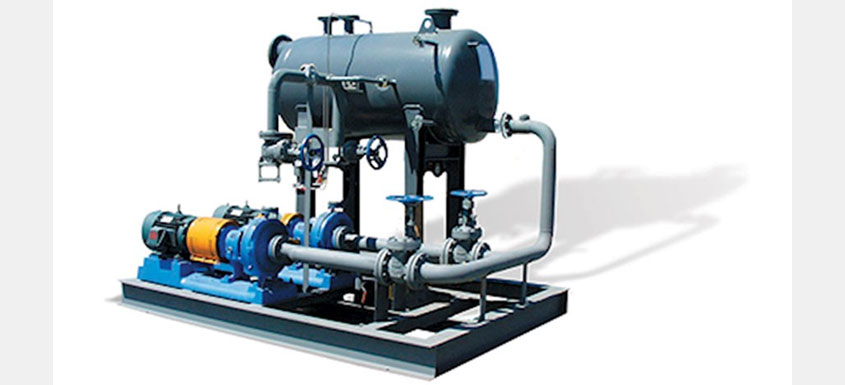Many condensate return systems use an atmospheric hotwell or vessel, because they are simple to implement and usually come ready to install as they are supplied as part of the boiler package.
In many cases, machine builders, suppliers, and OEMs only offer an atmospheric condensate return system because:
- It’s cheaper (the hotwell comes with the boiler)
- They may not know any better
- A high-pressure condensate return requires accurate sizing and entails significant hours of additional detailed engineering work
This type of condensate return setup works for many applications but can be inefficient for processes that operate at medium to high pressures. For these applications, using a condensate return system with an atmospheric hotwell or vessel leads to a significant amount of energy lost to atmosphere as flash steam. A high-pressure condensate return system for these applications is more ideal and are used to recover this energy.
In many cases, high-pressure condensate return systems are retrofitted by third party systems companies as a process improvement project.
To justify this process improvement, one must consider the energy-saving potential in fiscal terms. For example, a process operating at 9 bar (130 psi) with a steam consumption of 5,000 kg/hr (11,020 lb/hr) discharging to an atmospheric return vessel will waste 762 kg/hr (1,680 lb/hr) steam as flash steam at the condensate return vessel or hotwell. This equates to a fiscal loss of more than £150,000 per year based on 8,000 hours per year operation and an assumed steam cost of £25 per tonne The example flash steam and fiscal calculations can be found at the end of this blog post.
A high-pressure condensate return system looks no different than other condensate return vessels, but the specification is different to be able to handle the higher pressures and temperatures involved. High-pressure condensate return systems have dedicated controls to manage the high-pressure condensate return, along with safety devices as required by the application.
Typically, the equipment is supplied pre-built as a complete sub-system on a skid frame ready to install and commission.
Benefits of high-pressure condensate return
- Process improvement by recovering valuable heat energy from within the condensate, improving overall energy efficiency and line profitability
- An increase in boiler capacity by reducing steam lost as flash steam, that steam is then available to other users which is beneficial for sites where steam generation capacity is an operating concern
- Carbon (CO2) emissions reduction
EXAMPLE: Flash steam loss to atmosphere calculation
[ (hf – 419) x Q ] / 2256 = flash steam loss kg/hr
Where; hf = sensible heat of condensate at P1 (from steam tables) and Q = mass of condensate.
Example; at 9 bar, hf = 763 kJ/kg, Q = 5,000 kg/hr:
Flash steam loss = [ (763 – 419) x 5,000 ] / 2256 = 762 kg/hr
EXAMPLE: Fiscal loss calculation
Qloss x Hrs x SteamCost = Fiscal loss £ per year
Where; Qloss = mass of lost steam, Hrs = annual operation, Steam Cost = overall steam generation cost including boiler house chemicals etc… typically £20 to £25/tonne
Example; For a process losing 762kg/hr as flash steam, that operates 8,000 hr per year, with a steam generation cost of £25/tonne
Flash steam cost: 0.762 x 8000 x 25 = £152,400 per year
PLEASE NOTE:
The steam costs in the example are for conditions in the United Kingdom. The costs in other countries may be different.
Source: Kadant













